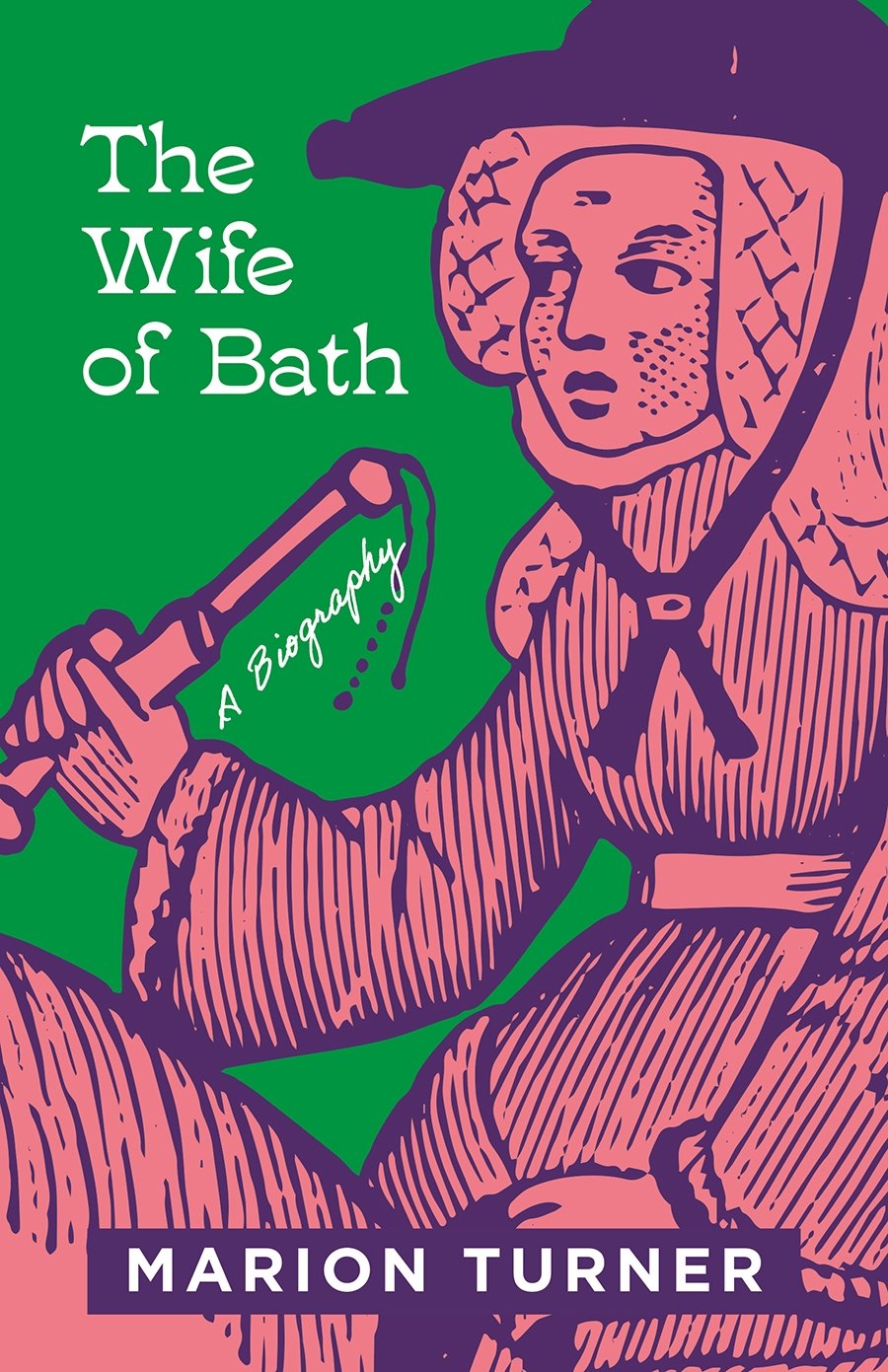'The Wife of Bath: a biography' by Marion Turner
Marion Turner’s 2019 book Chaucer: a European Life was widely acclaimed. Now she has written a shorter ‘biography’ of the poet’s most enduringly famous fictional character, and it is another triumph. The Wife of Bath is an appropriate figure for such a portrait because for six centuries she has had a life well beyond The Canterbury Tales, and indeed she is still very much with us, as shown in the final chapter. The first part of the new book looks at the figure in her contemporary historical and literary context, the rest of it at Alison’s many ‘afterlives’.
Central to Turner’s purpose is the idea that Chaucer gives his character a strong inner life, an interiority and a level of self-knowledge that is new in English literature. His portrayal of her as the first ordinary middle-class woman in English literature is truly innovative:
Before Chaucer invented the Wife of Bath, there was no place in European literary tradition for a woman to speak out in this way who was neither a beautiful victim nor a hideous stereotype. (32).
For Turner, this is also one reason why a persistent response to her has been attempted silencing: her voice is simply so alive that it has often been seen as threatening, a cause of anxiety for patriarchal assumptions. Post-plague Northern Europe opened up opportunities for women, offering more autonomy (though it was certainly not a feminist utopia), and this seems to have been particularly unsettling to some men:
Women were a crucial force in the economy in the years following the Black Death, but the very power that economic independence gave them - the power to choose whether and whom to marry, the power to escape parental control, the power to spend their own money - was profoundly threatening to the idea of female inferiority and subservience promoted by men such as the clerical authors of books of wicked wives. (68)
In a book in which interruptions are frequent, the Wife of Bath is more interrupted in her Prologue than anyone else, showing
very clearly how problematic it was for a woman - even a respectable, wealthy, mercantile widow - to speak in the world of authoritative texts, given the force of the books of wicked wives stacked up against her. (85)
These texts express a persistent misogyny (an often-used word in this book) which is still with us. That sexually-driven hatred is most startlingly seen in the ‘pilgrim badge’ of a walking vulva, from the Netherlands of the late 14th/early 15th century (it is in the colour illustrations).
After the fascinating first 135 pages looking at Alison in her contemporary context, Marion Turner turns to the unbroken afterlife during which she escaped from Chaucer’s control in the succeeding centuries, right up to last year. Included are influences on James Joyce, Margaret Atwood, Pier Paolo Pasolini (seriously, what was he on?), and Alexander Pope. A highlight is a brilliant section on the inescapable similarities with Falstaff, another exuberant speaker, particularly as seen in The Merry Wives of Windsor. The recurrent keynote is that she is always a disruptive and challenging figure:
when authors were uneasy about her, they still could not leave her alone.
Marion Turner is right up to date: her final chapter looks at ‘Black Alisons: wives of Brixton, Bafa, and Willesden’ in the words of three Black women writers: Jean ‘Binta’ Breeze, and then two authors whose versions I have read and admired, Patience Agbabi (my piece on Telling Tales), and Zadie Smith (my piece on The Wife of Willesden, which I’d love to see on stage):
Finally, women have decisively started to claim Alison’s voice after hundreds of years of male appropriations - and she is written in an oral form. All three texts can be read on the page, but can also be heard and viewed, in an apt echo of medieval reading practices. (227-8).
In her final chapter, Turner also makes the important point (informed by her vast and deep level of expertise), that
While it is unarguable that Chaucer is indeed a dead white man, the idea that he represents conservative authority and a monocultural england is profoundly misleading. Chaucer was an experimental, even radical, poet whose poetics were driven by the idea of hearing multiple voices and perspectives, and who asserted the importance of listening to marginal voices. (233-4)
This whole book is full of such voices, radiating from the central one, created by Chaucer in the late fourteenth century. Marion Turner assembles them with such skill: at the end she states that she wants to
do more of a certain kind of writing, to create research-based books that reach a wide audience and move beyond universities. (249).
She is definitely doing just that: this is a model of how an academic can inform and educate a wider audience in a thrilling way. It is an essential read for all of us who love and teach literature.
More:
My discussion with Professor Terry Dolan about Chaucer.
BBC 'Free Thinking’ programme with Marion Turner, Patience Agbabi and Hetta Howes.
Travels Through Time podcast looking at the year 1397.
